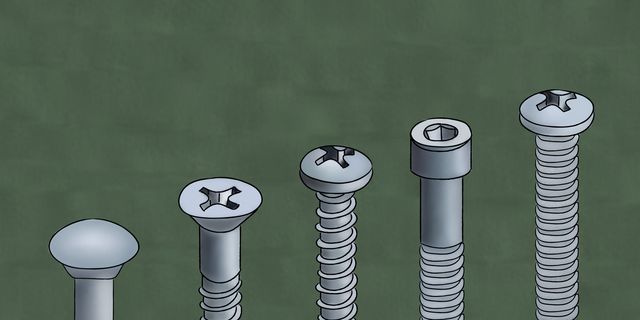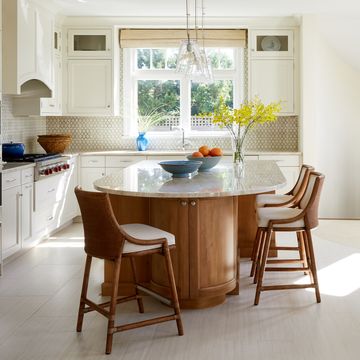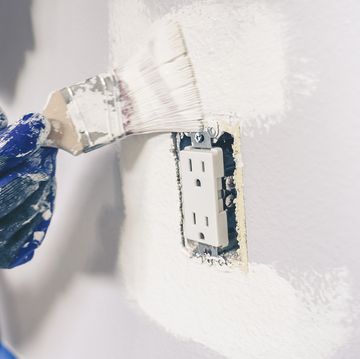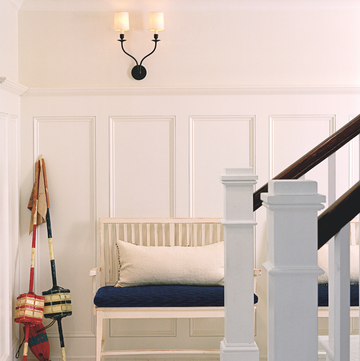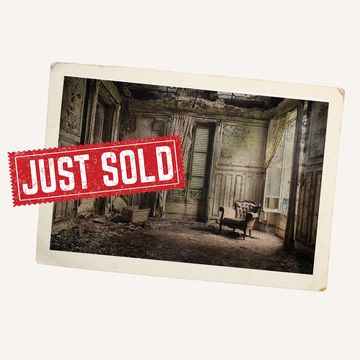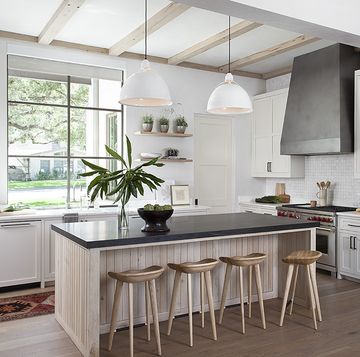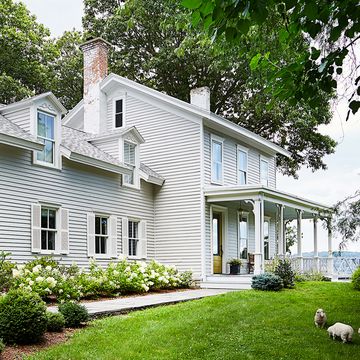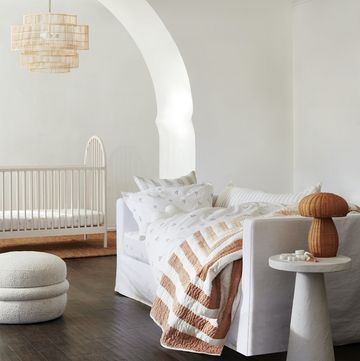Hex Bolts
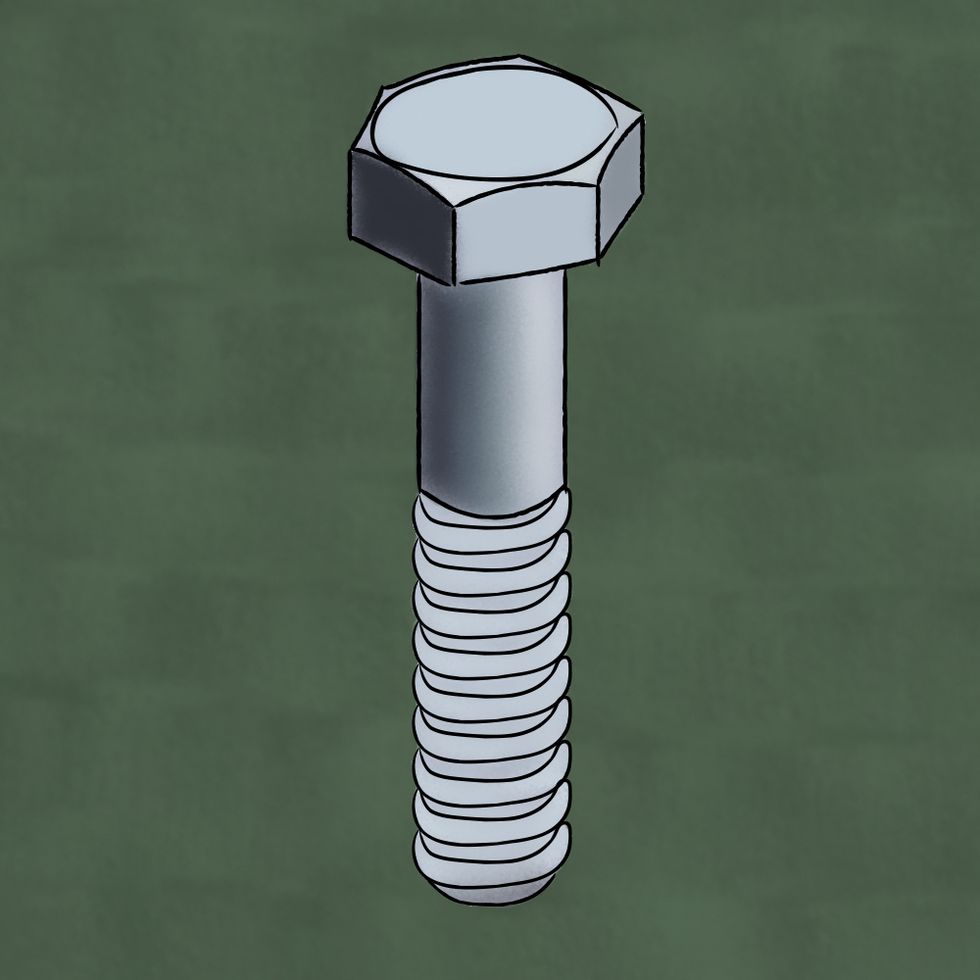 Diana Fujii
Diana FujiiHex bolts, or hex cap screws, are large bolts with a six-sided head (hexagonal!) used to fasten wood to wood, or metal to wood. "Unlike carriage bolts, these will have a tendency to spin as you tighten them, so you need to hold the bolt head with a wrench or a socket and tighten (or loosen) the nut with a second wrench," Roy says. Hex bolts have small threads and a smooth shank, and may be plain steel for interior projects or stainless steel or galvanized for exterior use.
Wood Screws
 Diana Fujii
Diana FujiiWood screws have a threaded shaft and are used to attach wood to wood. These screws can have a few different times of thread. According to Roy, wood screws that have fewer threads per inch of length are best used when fastening soft woods, such as pine and spruce. On the other hand, fine-thread wood screws should be used when connecting hard woods. Wood screws have many different types of heads, but the most common are round heads and flat heads. "A round head wood screw has a head that sits completely above the workpiece. The flat head wood screw has a head that is recessed into the work," Roy explains. Wood screws can be plain steel, brass, stainless steel, or steel with a weather-resistant finish.
Sheet Metal Screws
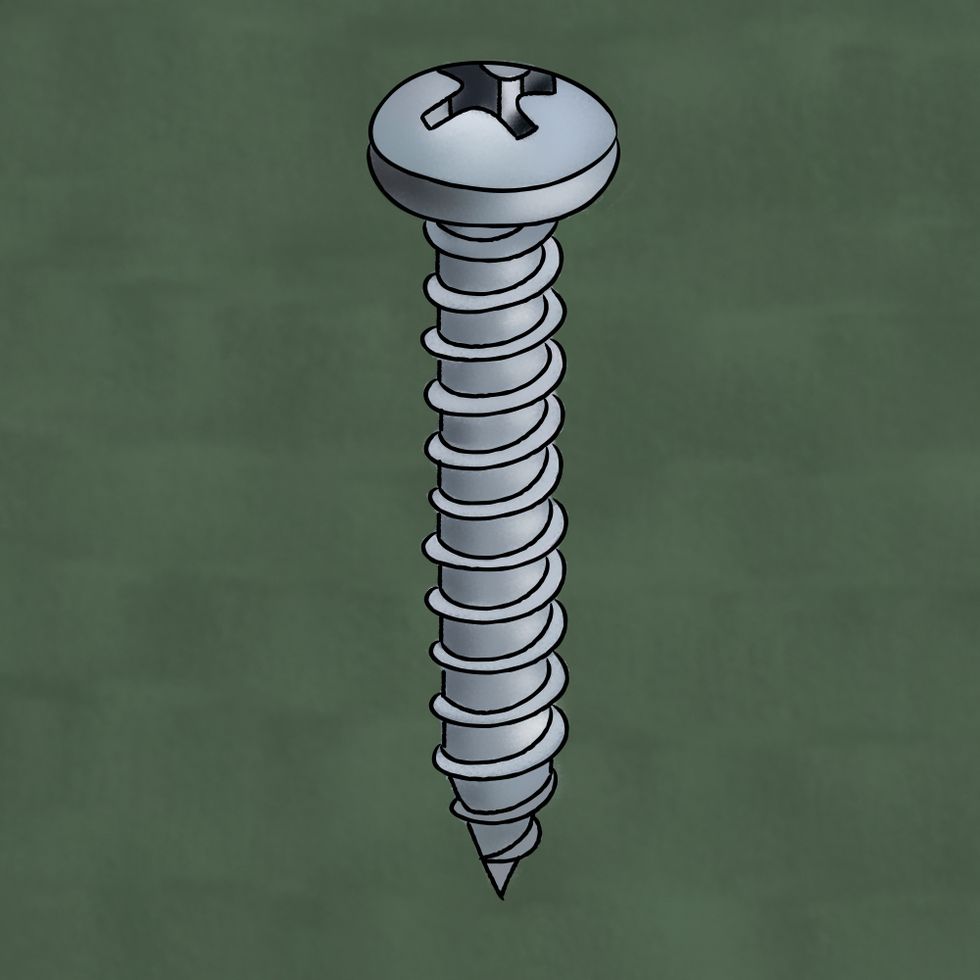 Diana Fujii
Diana FujiiSheet metal screws are used to fasten two pieces of sheet metal together, or to connect sheet metal to other types of metal, such as tubing. These screws typically have a round head, flat head, or even a hex head. Something to keep in mind about sheet metal screws is that they're thread-cutting types, Roy says. "The tip of the screw is shaped to cut threads into the receiving metal into which the screw is driven," he explains, adding that they're often called "self-tapping" screws. They're almost always plain steel, plain steel with a weather-resistant coating, aluminum, or stainless steel, for the maximum in weather resistance.
Advertisement - Continue Reading Below
Machine Screws
 Diana Fujii
Diana FujiiMachine screws are a hybrid between a small bolt and a screw, used to fasten metal to metal, or metal to plastic. In a home, they're used to fasten electrical components, such as attaching a light fixture to an electrical box. In an application like that, machine screws are turned into a hole in which matching threads are cut, or "tapped." If the hole isn't tapped, the machine screw requires a nut, says Roy.
Socket Screws
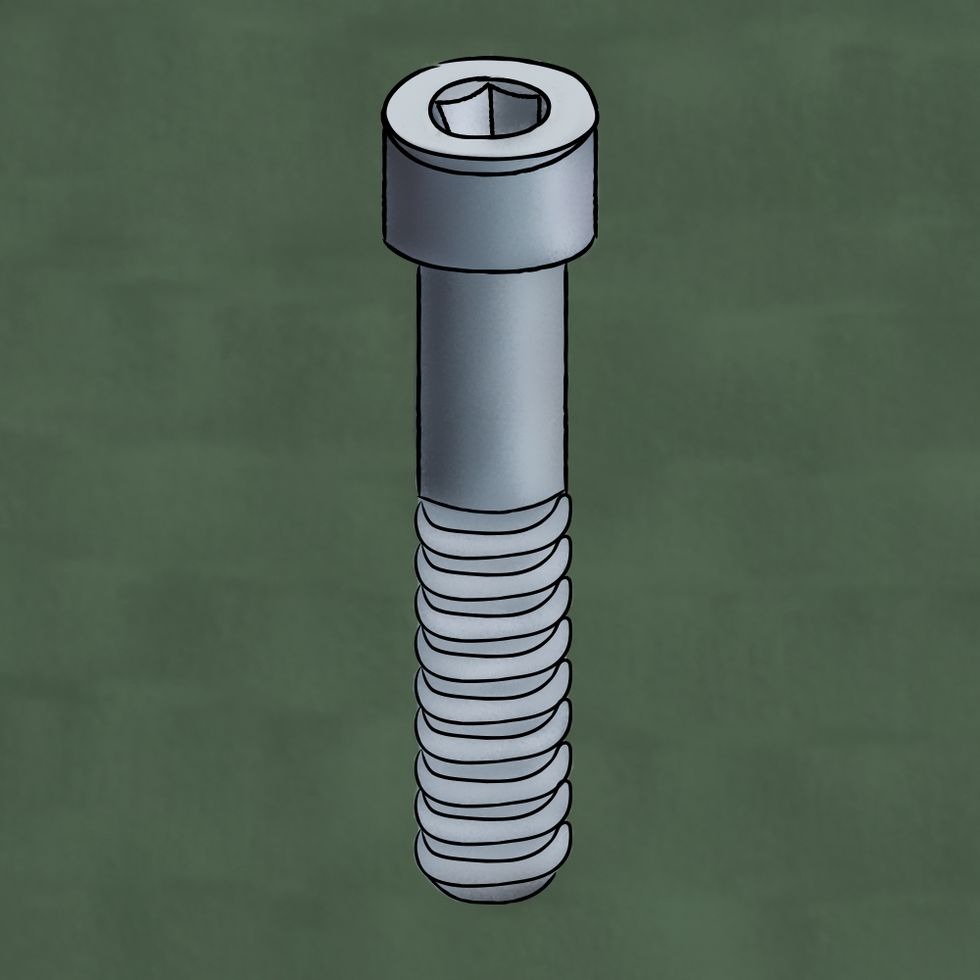 Diana Fujii
Diana FujiiSocket screws are a type of machine screw that have a cylindrical head to receive an Allen wrench. In most cases these screws are used to attach metal to metal, and need to be installed tightly to ensure a safe connection. They're typically used when it's likely that the item will be disassembled and reassembled over time.
Lag Bolts
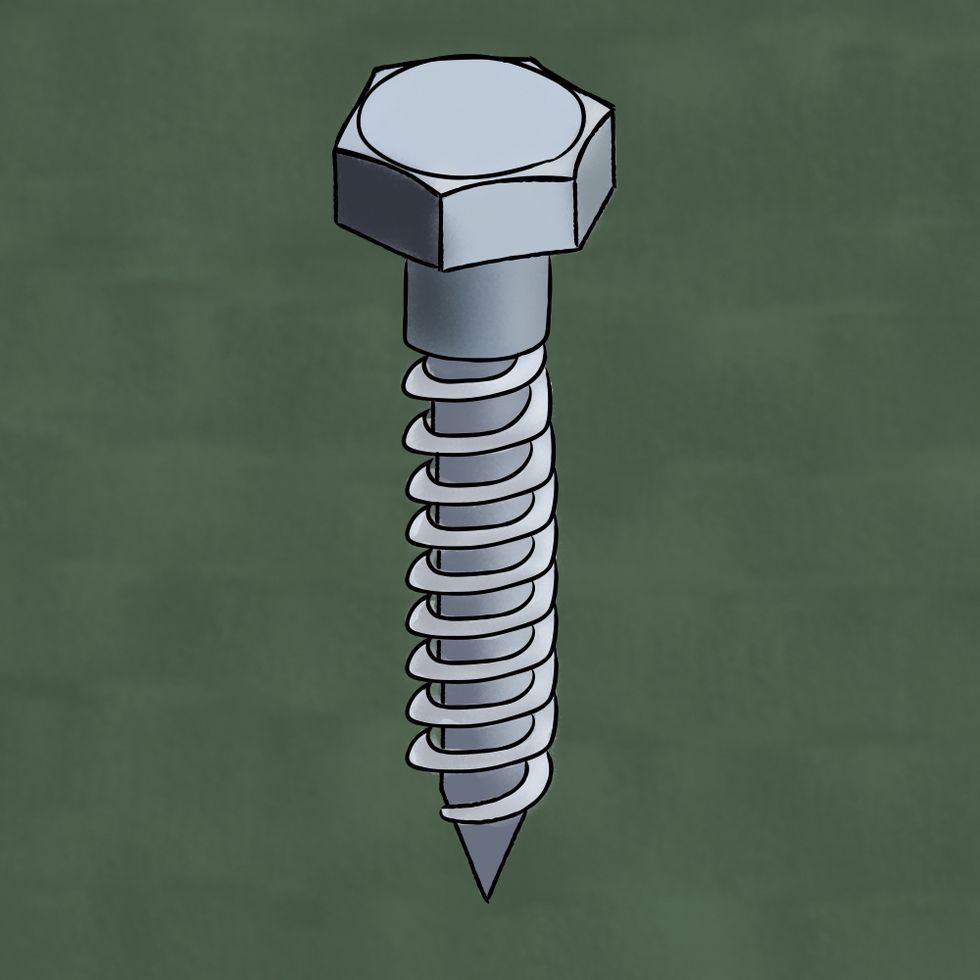 Diana Fujii
Diana FujiiLag bolts, better known as lag screws, are typically large in diameter and long enough to deeply penetrate wood, so as to create firm connections with little chance of the screw loosening after it's been tightened. Common places where this type of screw can be found are decks, docks, and wood-retaining walls. Because pressure-treated exterior wood is corrosive, lag screws have a corrosion-resistant coating. "They are hot-dipped in zinc, or are made of stainless steel," Roy explains.
Advertisement - Continue Reading Below
Carriage Bolts
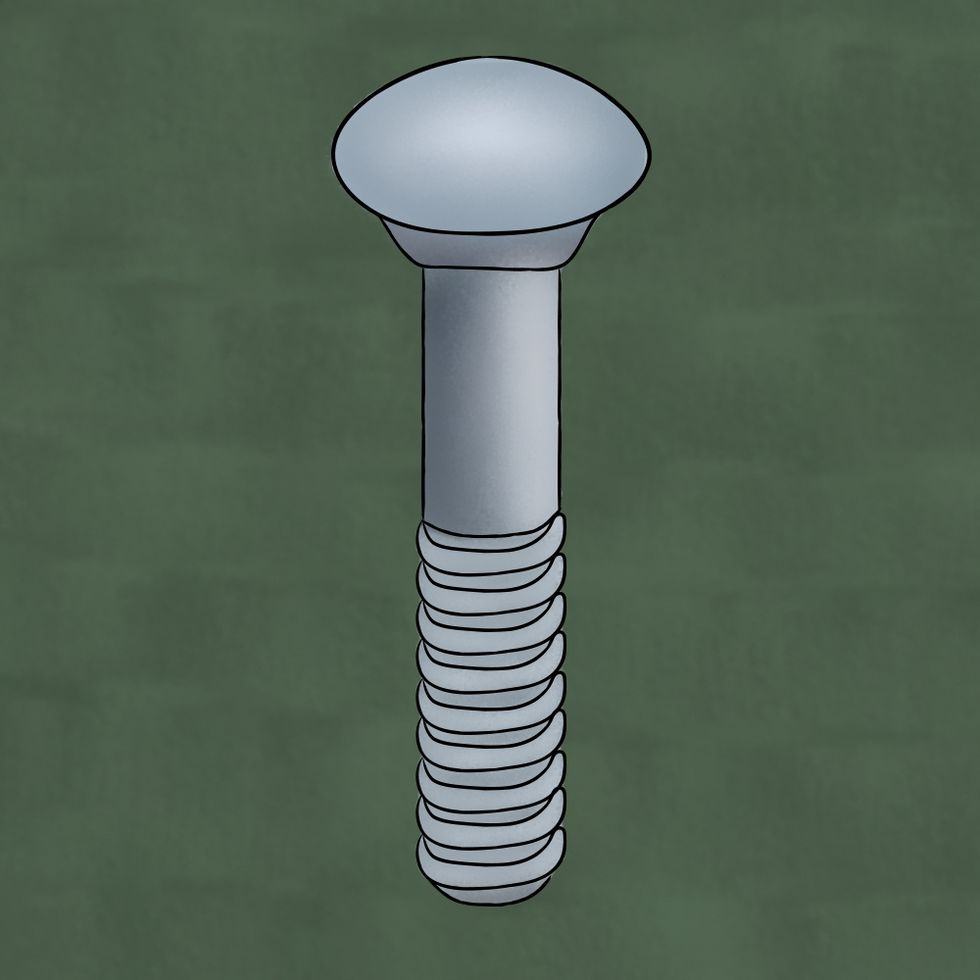 Diana Fujii
Diana FujiiCarriage bolts, which could be considered the lag screw's cousin, are large bolts used with washer and nuts to secure thick pieces of wood together. Below the bolt's round head is a cube-shaped extension, which cuts into the wood and prevents the bolt from turning as the nut is tightened. This makes turning the nut easier (you don’t have to hold the head of the bolt with a wrench) and prevents tampering. "The nut is almost always on the back of the assembly. Thus, once it’s tightened the fastener cannot be easily undone, since the carriage bolt’s head is round—like an old fashioned rivet—and there’s no way you can easily grab it with pliers or a wrench," Roy explains.
Pin it for later!
 Diana Fujii
Diana Fujii
Alyssa is the senior editor of content strategy at House Beautiful who covers home decor, design trends, and news. She is a self-proclaimed sleep expert and a pop culture addict.
Advertisement - Continue Reading Below
Advertisement - Continue Reading Below
Advertisement - Continue Reading Below
